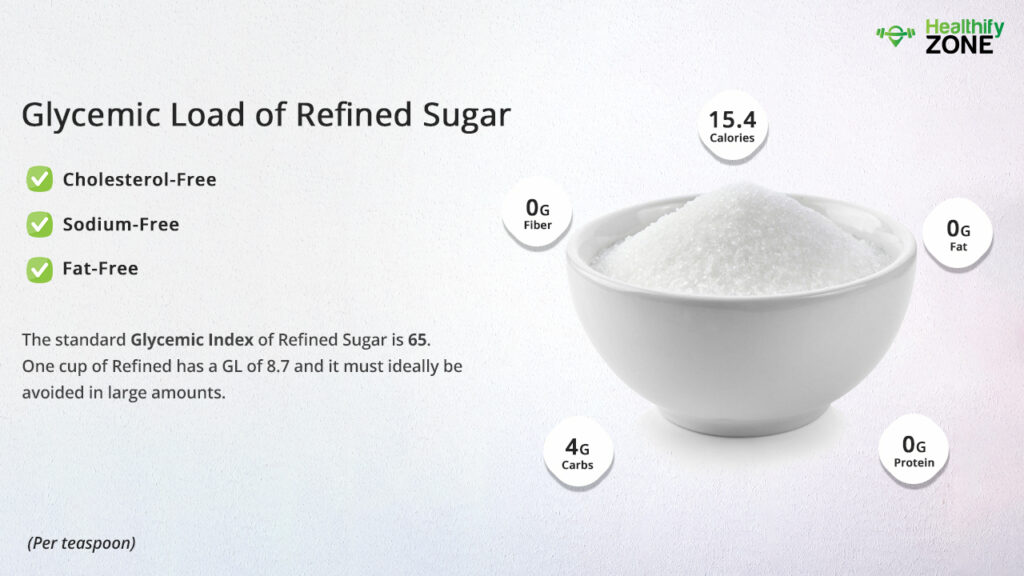The measure of the carbohydrate content of the food together with the speed with which it increases the blood glucose levels is Glycemic Load. The Glycemic Index is a simple manner of making healthier diet choices. It helps compare and find alternative sources of nutrients according to blood glucose levels. Glucose has a higher blood glucose response compared to fructose.
Refined sugar has witness extra attention in the past decade. Light has been thrown on its detrimental health effects and its intake being linked to conditions like obesity, diabetes, and heart disease. Natural sugar is extracted to make refined sugar. Two examples of sugar created this way are table sugar and high-fructose corn syrup. According to the International GI Tables, it has a GI of 65, which is particularly high.

Sugar sneaks into your diet and promotes detrimental health effects. It is linked with obesity, excess belly fat, risk of diabetes, and heart diseases.
How to Calculate Glycemic Load of Refined Sugar?
The standard Glycemic index of refined or table sugar is 65. The high glycemic index of the foods helps in reducing the risks related to cardiovascular diseases. If we want to talk about diet, the key to prevent diabetes or any chronic illness is to distribute the carbohydrate consumption content throughout the day and manage the sugar levels in the body correctly—however, refined sugar is something that needs to be avoided most of the time to ensure your blood glucose levels doesn’t sky rocket.
The Formula/Procedure For Calculation of Glycemic Index of the Refined Sugar :
GL = GI * carbs / 100
where
- GL – glycemic load;
- GI – glycemic index;
- and carbs – the amount of carbohydrates in the portion.
| SL.NO | REFINED SUGAR BY WEIGHT IN (g) | GLYCEMIC LOAD |
| 1. | 10 g of Refined Sugar | 6.5 (low) |
| 2. | 50 g of Refined Sugar | 32.5 (high) |
| 3. | 100 g of Refined Sugar | 65 (high) |
| 4. | 1 Tablespoon of Refined Sugar | 8.2 (low) |
| 5. | 1 Serving Cube of Refined Sugar | 1.5 (low) |
| 6. | 1 Cup of Refined Sugar (150 g) | 8.7 (low) |
Is Refined Sugar Safe to Consume If You Have Diabetes?
Given that diabetes is characterized by high blood sugar levels, people often wonder if eating sugar causes the same. Studies cannot prove that sugar causes diabetes, but the association between the two is very strong. Eating large amounts of sugar can indirectly affect diabetes by raising body weight and body fat, which increases the risk of diabetes.
Can I Eat Refined Sugar During a Fat-Loss Diet?
One must be very cautious about consuming sugar. You must especially limit it if you are on a fat-loss diet.

- 10 g of sugar has a GL of 6.5 which is in the permissible levels.
- Anything more than 20 g of sugar shoud be taken rarely if you are on a fat-loss diet.
Can I Eat Refined Sugar During a Low-Carbohydrate Diet?
You can eat sugar during a strict low-carb diet. But, it is important that you are careful about the quantity you are consuming. We suggest you not consume more than 10 g of sugar per serving.
Is Refined Sugar High in Sugar?
100 g of refined sugar has 100 g of sugar and 100 g of carbs. That being said, it is especially high in two. However, you can consume it in very small quantities, but it is advisable that you choose natural sweeteners over it.